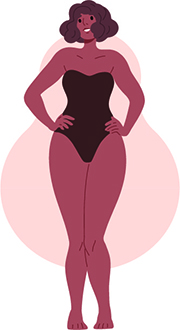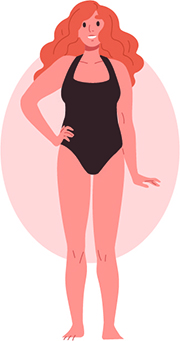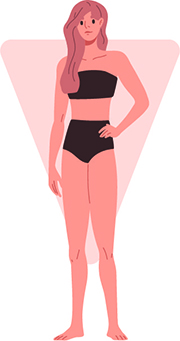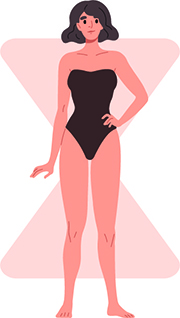International sewing patterns
International
sewing patterns
No language barrier · 9.500 patterns from 37 countries · incl. translation help
No language barrier · incl. translation help
9.500 patterns from 37 countries
Organic Fabrics
Especially nowadays we have to pay a lot of attention on our lifestyle and try to live as sustainable as possible so that we have a chance to fight against the climate crisis. Unfortunately the textile production plays a huge role in pollution due to the usage of chemicals and bleaches and has an enormous water and energy consumption.
Therefor organic fabrics are a great way to contribute to a more environmental friendly lifestyle and still offer great comfort and style.
Why should we use organic fabrics?
One of the main reasons why we should buy and use organic or sustainable fabrics is our environment. As we all know we're in the middle of a climate crisis and we have to do everything we can in order to save our planet. Unfortunately the conventional textile production has great energy usage, high consumption of water and chemicals that are used in the process often end up polluting the environment or even the drinking water. When we buy organic fabric we contribute a small part to less pollution and water usage. Therefor by buying eco-friendly fabric we take a small step towards a more sustainable life.
What are organic and sustainable fabrics?
Organic fabrics are manufactured using organic production systems. The fibers are grown without the use of toxic chemicals and during the manufacturing process no harmful bleaches or other chemicals are used. Additionally there's no use of genetically engineered seeds. Oftentimes organic and sustainable fabrics are also biodegradable. To make sure the fabric you're buying is sustainable you can look for specific certificates and standards. One of the most famous and comprehensive seals is probably the GOTS Standart (Global Organic textile Standart), which ensures and defines social and environmentally friendly manufacturing processes of the textile industry. Along the entire production chain of GOTS fabrics, strict attention is paid to compliance with these criteria. This applies from cultivation to processing, confection, packaging, export, import and distribution. And, of course, for all types of fabric - starting with organic cotton and ending with organic hemp. The quality of the certificate and the GOTS fabrics is guaranteed by constant and independent controls.
Another label you can keep you eyes out for is the Öko-Tex Standard 100. The OEKO-Tex 100 Standarts confirm the human-ecological safety of textile products during all stages of production.
Examples for organic fabric
Organic Cotton Fabric
Oragnic Cotton is one of the most natural fabrics as it's made out of natural and organic fibres. It's grown without pesticides and synthetic fertilizers and is processed without any chemicals. From an ecological standpoint, organic cotton farming uses less energy and less water than conventional cotton. While conventional cotton is one of the fabrics with the most water usage. Organic Cotton can be used for many different sewing projects like baby and kids clothes, clothes for adults or home accessories.
You can notice organic cotton by either the GOTS Label, Oeko-Tex or the OCS-Label which stands for 'Organic Content Standart'.
Another sustainable fabric option would be recycled cotton which is made out of post-industrial or post-consumer waste. Recycled Cotton helps to prevent huge amounts of waste produced by the fashion industry.
Organic Linen Fabric
Organic Linen is a really ecological fiber as the production requires less water than the cotton production. Linen is derived from the flax plant and is a super lightweight and breathable textile. Look out for the GOTS and OCS Standards to make sure your linen fabric is organic linen.
Organic Hemp Fabric
Hemp is one of the most environmental friendly fibers you could buy. The production requires only little amounts of water compared to the cotton production and the growing of hemp plants is healthy for the soil. It is also considered carbon negative as hemp can absorb CO2 from the atmosphere. Hemp fabrics have many great benefits like being light weight and protective against the sun.
Lyocell fabrics/ Tencel
Lyocell is a semi-synthetic, or cellulosic fabric. Sometimes Lyocell is known as TENCEL, which is the trademark name given by the Austrian company Lenzing, who is the most known lyocell producer. Lyocell is quite known in the slow fashion or fair fashion world by now.
Lyocell is produced from the pulp of eucalyptus trees, which don't require a lot of water and pesticides. Furthermore the TENCEL™ brand only uses wood from sustainably managed forests.
The manufacturing of lyocell is also sustainable, because it requires less water than other fabrics, and occurs in a “closed-loop process” where all the substances and water that is being used can be reused for further manufacturing processes. If you want to make sure you're buying sustainable and responsibly produced fabric, you can try to buy the Tencel fabrics produced by the Lenzing Company as they're really transparent about their whole production process.
Organic Wool Fabric
Wool from sheeps, merino sheeps or alpacas can be labeled as organic as well. Since they're natural fibers and long lasting they don't have a huge impact on the planet. However a lot of animal agricultures are being connected to land clearance and there are also several concerns about the animal welfare. To make sure that ethical standards are met, you can try to buy organic wool which was labeled with organic wool standard certificates like the RWS (Responsible Wool Standart).
Of course there's many more types of organic fabric, for example organic bamboo fabric, the ones mentioned where just examples for the wide range of organic textiles.
Benefits of organic fabric
Besides the environmental benefits of organic and sustainable fabric, there are also a few other reasons to buy organic fabrics.
Conventional fabrics often contain chemicals which can be harsh on the skin. In contrast, organic fabrics are produced using a manufacturing process that is (as far as possible) free of harmful substances, minimizes or avoids them. As a result, organic fabrics are usually particularly skin-friendly and therefore very suitable for allergy sufferers and, of course, for children and babies. In general, you could say that organic fabric is especially suitable for people with sensitive skin and allergies and for babies and kids clothing.
Another reason why organic fabrics are a better than conventional fabrics are the social criteria. Organic fabric certificates like the GOTS textile standard include not only ecological but also social criteria to ensure that the fabrics are produced under fair conditions. Social and ethical standards such as regulated working hours, fair wages and adequate housing unfortunately are still not standard in many production facilities outside Europe. Therefor you as a consumer can try to influence the working conditions in other countries to a better by buying organic fabrics.
All together the environment, social standards and the health aspects make three really good reasons why we should all try to buy more organic fabrics and sustainable textiles rather than conventional ones.
90% PDF or Freebooks - immediately available
Categories
Filter selection
What is my body shape?

Pear
- Narrow shoulders
- Slim waist
- Strong hips/ thighs
- Round bottom

Rectangle
- Slim, straight stature
- Small bust
- Straight waist
- Small bottom

Round
- Large bust
- Pronounced body center
- Strong thighs
- Slim legs

Inverted triangle
- Broad shoulders
- Medium to large bust
- Rather straight waist
- Slim legs

Hourglass
- Narrow shoulders
- Slim waist
- Stong hips/ thighs
- Round bottom
Organic Fabric
Organic Fabrics are environmentally friendly and produced without the use of chemical pesticides, herbicides or any other harmful chemicals, which makes them better not only for our planet but also for you and your skin.
more seen below...
Welcher Körper-Typ bist Du?

A-Typ - Birne
- Schultern schmal
- Taille schlank
- Hüften/ Oberschenkel kräftig
- Po rund

H-Typ - Banane
- Statur schlank, gerade
- Oberweite klein
- Taille gerade
- Po klein

O-Typ - Orange
- Oberweite groß
- Körpermitte ausgeprägt
- Hüften kräftig
- Beine schlank

V-Typ - Apfel
- Schultern breit
- Oberweite mittel bis groß
- Taille wenig ausgeprägt
- Beine schlank

X-Typ - Sanduhr
- Schulter + Hüfte ähnlich breit
- Oberweite groß
- Taille schlank
- Po rund



